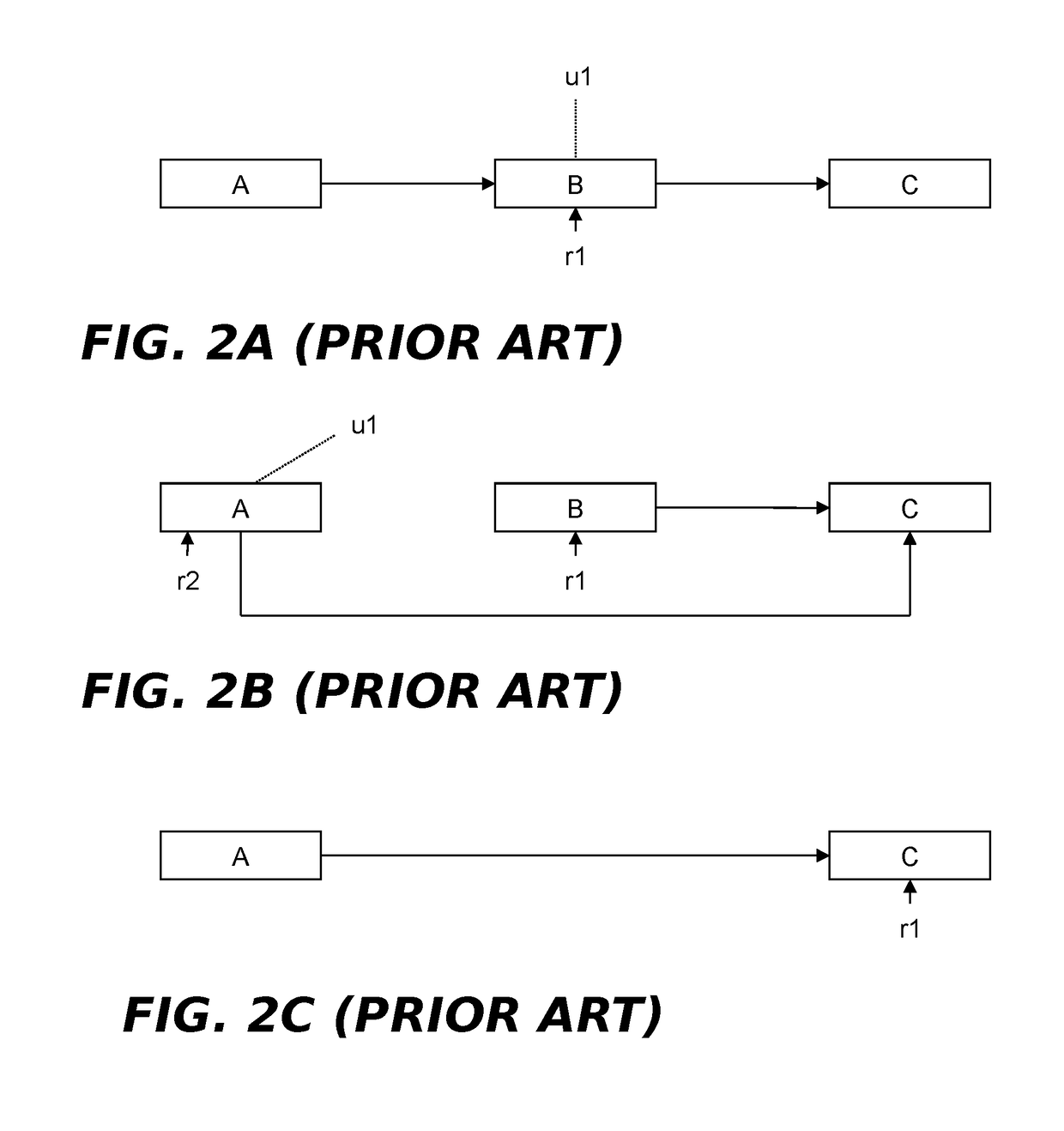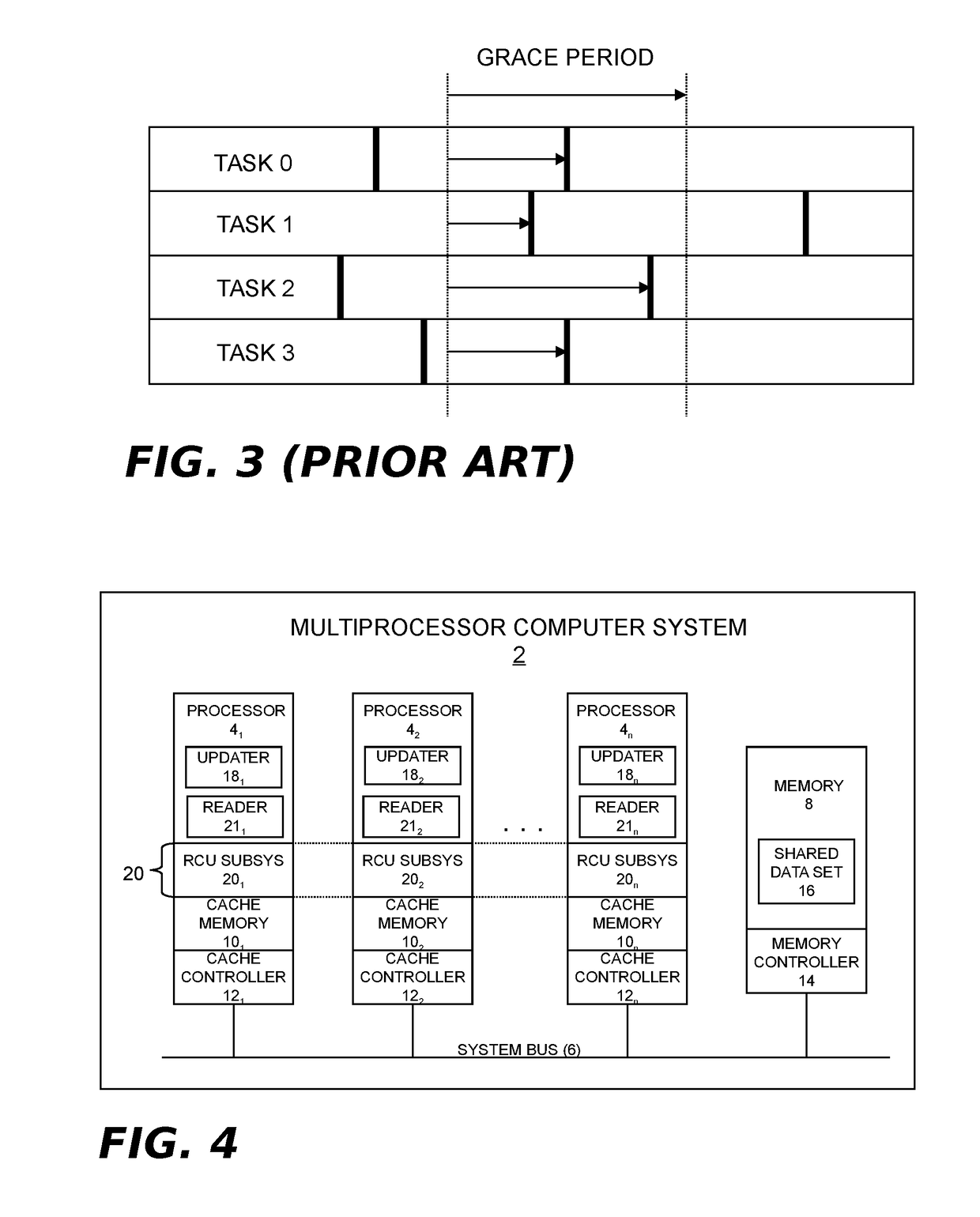Enabling real-time CPU-bound in-kernel workloads to run infinite loops while keeping RCU grace periods finite
a technology of in-kernel workloads and real-time cpu-bound in-kernel workloads, which is applied in the field of mutual exclusion mechanisms, can solve the problems of inability to accept rcu, burdensome read-side lock acquisition,
- Summary
- Abstract
- Description
- Claims
- Application Information
AI Technical Summary
Benefits of technology
Problems solved by technology
Method used
Image
Examples
Embodiment Construction
[0026]Turning now to the figures, wherein like reference numerals represent like elements in all of the several views, FIG. 4 illustrates an example multiprocessor computer system 2 in which the disclosed RCU grace period technique supporting real-time CPU-bound in-kernel workloads may be implemented. In FIG. 4, the computer system 2 may include a plurality of processors 41, 42 . . . 4n, a system bus 6, and a program memory 8. There may also be cache memories 101, 102 . . . 10n and cache controllers 121, 122 . . . 12n respectively associated with the processors 41, 42 . . . 4n. A memory controller 14 may be associated with the memory 8. As shown, the memory controller 14 may reside separately from processors 42 . . . 4n (e.g., as part of a discrete chipset). Alternatively, the memory controller 14 could be provided by plural memory controller instances that are respectively integrated with the processors 41, 42 . . . 4n.
[0027]The computer system 2 may represent any of several differ...
PUM
 Login to View More
Login to View More Abstract
Description
Claims
Application Information
 Login to View More
Login to View More - R&D
- Intellectual Property
- Life Sciences
- Materials
- Tech Scout
- Unparalleled Data Quality
- Higher Quality Content
- 60% Fewer Hallucinations
Browse by: Latest US Patents, China's latest patents, Technical Efficacy Thesaurus, Application Domain, Technology Topic, Popular Technical Reports.
© 2025 PatSnap. All rights reserved.Legal|Privacy policy|Modern Slavery Act Transparency Statement|Sitemap|About US| Contact US: help@patsnap.com



